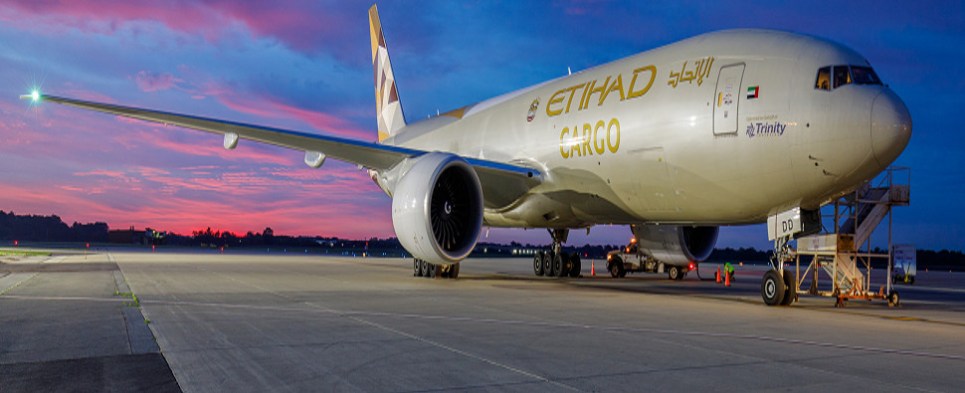IF DAYS COUNT, HOW ABOUT HOURS?
New York’s John F. Kennedy International Airport is situated in the largest and densest consumer market in the United States, a city of 8.5 million people within a metropolitan region of 20.2 million. Indianapolis is a city of 865,000 in a metropolitan area of 2.0 million people. Yet, in 2017, Indianapolis International Airport handled roughly the same volume of air cargo as JFK, around 1.28 million tons.
JFK was once the largest air cargo gateway in the world, but it has been slipping over a period of decades. Its cargo volumes are down 20 percent in the past 10 years while Indianapolis’ have increased by 60 percent during the same period.
What’s going on? Part of it has to do with the extreme hassles—in the form of road congestion—involved in getting cargo to and from JFK. The same is true in other of the traditional gateways such as Chicago and Atlanta.
But that’s far from the complete picture. Here are a few more facts to fill in the blanks. Most people know that UPS’s national hub is in Louisville, Kentucky, and that FedEx’s is in Memphis, Tennessee. Perhaps fewer know that DHL uses Cincinnati/Northern Kentucky International Airport as one of its main U.S. hubs or that Amazon Prime Air is building a $1.5-billion hub at that same airport, whose cargo volumes increased by 27 percent last year, to reach almost 1 million tons. The smaller but up-and-coming cargo-dedicated Rickenbacker International Airport in Columbus, Ohio, saw its international cargo volumes increase by 65 percent last year.
A growing number of importers, mainly retailers, are deploying a single distribution center strategy, and they are finding that these Midwestern cities sit at the center of gravity of the U.S. population, close enough to the densely populated East Coast and only a couple of days’ drive from the West Coast. At the same time, they enjoy much less congestion and lower costs at these airports, all of which brings smiles to the faces of supply-chain managers and executives alike.
“When people are moving airfreight, they don’t want to sit around and wait for their cargo to be available,” says Cathy Roberson, founder and head analyst at Logistics Trends & Insights, referring to the congestion at JFK and elsewhere. “From the Midwest, you can reach the entire United States within a matter of two days. That’s a big plus over JFK.”
“More and more retailers and fashion houses are consolidating their logistics operations for national distribution,” adds Dave Whitaker, chief commercial officer at the Columbus Airport Authority, which runs Rickenbacker. “It makes more sense if they need a charter instead of a scheduled flight for a product rollout or a recall.”
So, for example, Ascena Retail Group, which includes such brands as Ann Taylor, LOFT and Lane Bryant and is headquartered in the New York area, does its brick and mortar distribution out of Columbus and its e-fulfillment out of Indianapolis. Abercrombie & Fitch has its corporate and logistics headquarters in Columbus. And L Brands, a Fortune 500 company that includes Victoria’s Secret, Bath & Body Works and PINK, is likewise headquartered in Columbus.
Last year, L Brands chartered a Qatar Airways Boeing 777 freighter to carry 100 tons of garments from Sri Lanka to Rickenbacker. The charter was a one-off, explains Whitaker, but Rickenbacker is in talks to with Qatar to expand its presence at the airport.
Two other Middle Eastern carriers, Etihad and Emirates, are growing their footprints at Rickenbacker, with Etihad announcing a second weekly flight last May. The bump-up came as part of a $40-million deal with Trinity Logistics to carry apparel from the Indian subcontinent to U.S. retailers like Victoria’s Secret, GAP, Nike, Tommy Hilfiger, Speedo and Abercrombie & Fitch.
“Our customer base supported using Rickenbacker with their local massive investments in logistics,” says David Kerr, senior vice president for cargo at Etihad. “That developed a whole new platform for us.” What also made Etihad’s additional service possible was securing two new major customers—Raytheon and Lockheed Martin—who are exporting aviation components through Rickenbacker.
Emirates Airlines has also increased the frequency of its flights in and out of Rickenbacker, tripling them from one to three in a matter of a year. Emirates began scheduled import service to Rickenbacker in May 2015, flying a single weekly freighter frequency, and within a few months increased the service to twice weekly. By May 2016, the carrier added a third weekly flight. The airline also often operates additional frequencies each month to keep up with demand.
“We saw a lot of potential in working with Rickenbacker after flying several charters there for apparel shippers and auto manufacturers during the West Coast port strike in early 2015,” said Arthur Brown, Emirates SkyCargo’s regional manager for the Central U.S.
Cargolux and Cathay Pacific are the two other carriers with regular flights to Rickenbacker. Scheduled service from a fifth carrier is expected to be announced soon.
With Columbus, Indianapolis and Louisville all within little more than 100 miles of Cincinnati, the one problem Roberson sees on the horizon is a potential labor shortage for regional distribution and fulfillment centers. “Labor may eventually come at a premium,” she says. “Companies may have to offer incentives for people to relocate. Either that, or they will have to automate.”
Meanwhile, the hapless JFK is trying to play catch-up by improving its cargo infrastructure. The Port Authority of New York and New Jersey recently announced that a new 346,000-square-foot cargo warehouse at the airport would be opening in 2019. A $132-million investment includes the new facility and taxiway upgrades and represents the first phase of the modernization of JFK air cargo operations.
The new warehouse may be a partial answer to a cargo renaissance at JFK. But the horrendous roads leading to and from the airport, which have not been expanded since 1960, are not yet being addressed. Until the day comes when truckers are not almost guaranteed to be stuck on the Van Wyck Expressway, JFK will likely remain just another cargo airport and not the world leader it once was.





Leave a Reply